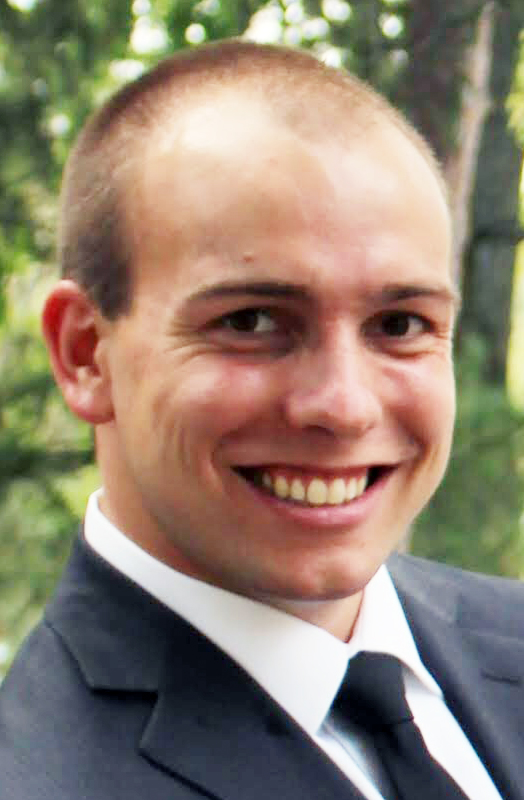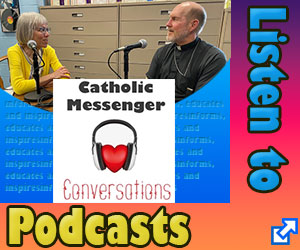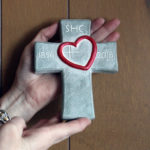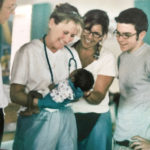By Patrick Schmadeke
Our daughter, Catherine, was baptized during Advent. A handful of moments stand out from the occasion as well as a few different themes, especially this one: we are stewards of one another in the family of God.

The first moment that stands out is the gathering itself. Given the reality of the pandemic, we gathered with just a small group of around a dozen family members for the baptism. In a way, as gatherings have become rarer, each one takes on a heightened significance.
Catherine’s baptism took place in the same chapel in which her older brother was baptized, the second moment that stands out for us. Physical spaces, especially sacred ones, are imbued with meaning. Our family has a liturgical history in this particular chapel, which reflects a certain continuity. It has been interesting to reflect on the way their baptisms have been connected in our liturgical imaginations by virtue of the space itself.
The Scripture readings, taken from 1 Corinthians 12:12-13 and John 15:1-11, reflected another special moment. The first reading says that we are all members of the body of Christ. The Gospel reading says that Christ is the vine and we are the branches on the vine. Both of these images reflect an integration of the individual into the whole of the community of believers and the person of Christ. The organic and communal dimensions of these images remind us that we are indivisible members of the community through our baptism.
We also found meaningful the additions to the litany of the Saints, which the rite makes possible. We added Saints Francis of Assisi, Matthew, Ambrose of Milan and Catherine of Siena. Each of these are important touchstones for us in the broader cloud of witnesses of faith. The final of these, Catherine of Siena, our daughter’s namesake, is a particularly important woman witness to the faith and a Doctor of the Church. We hope that our little Catherine can emulate facets of this timeless saint.
Another special moment was the key theme of the homily. The priest told those present there was no greater gift we could give Catherine; we were giving her up for adoption as a child of God. This was at once shocking and intuitive. This highlighted the true nature of all of our relationships.
We are all children of God, and that is the principal status of our relationships. This identity comes before all other identities, be it mother, father, sister, brother, friend or colleague. God shapes the way we live out each of these relationships.
The baptism itself was yet another special moment. The physical execution of baptism, especially in these times of digital remoteness, was powerful to witness. In a way, time slowed down as Catherine was baptized “In the name of the Father, and of the Son, and of the Holy Spirit.” As she experienced one of the oldest religious rituals, the faith of those who witnessed was renewed.
Finally, the Ephphetha, which comes just before the conclusion of the rite, was one of the most powerful moments of prayer: “The Lord Jesus made the deaf hear and the dumb speak. May he soon touch your ears to receive his word, and your mouth to proclaim his faith, to the praise and glory of God the Father.” To see this prayed over a baby bespeaks the great potentiality discovered in infant baptism. The mouths of babes proclaim the glory of God.
I find the Ephphetha in particular to be a challenge and an encouragement. A challenge to execute one’s responsibility in witnessing to the Christian faith. It is also an encouragement because it is prayed with confidence and hope that babies will “proclaim his faith, to the praise and glory of God the Father.” At a time when Catherine can understand a few words, and not speak any, what great promise is rooted in the sacrament of baptism. We can all look back to our own baptism, whether it occurred as an infant, child or adult, and renew the baptismal promise in our hearts.
(Editor’s note: Patrick Schmadeke is a graduate of St. Ambrose University (‘13) and a graduate of the Master of Divinity program at the University of Notre Dame.)











